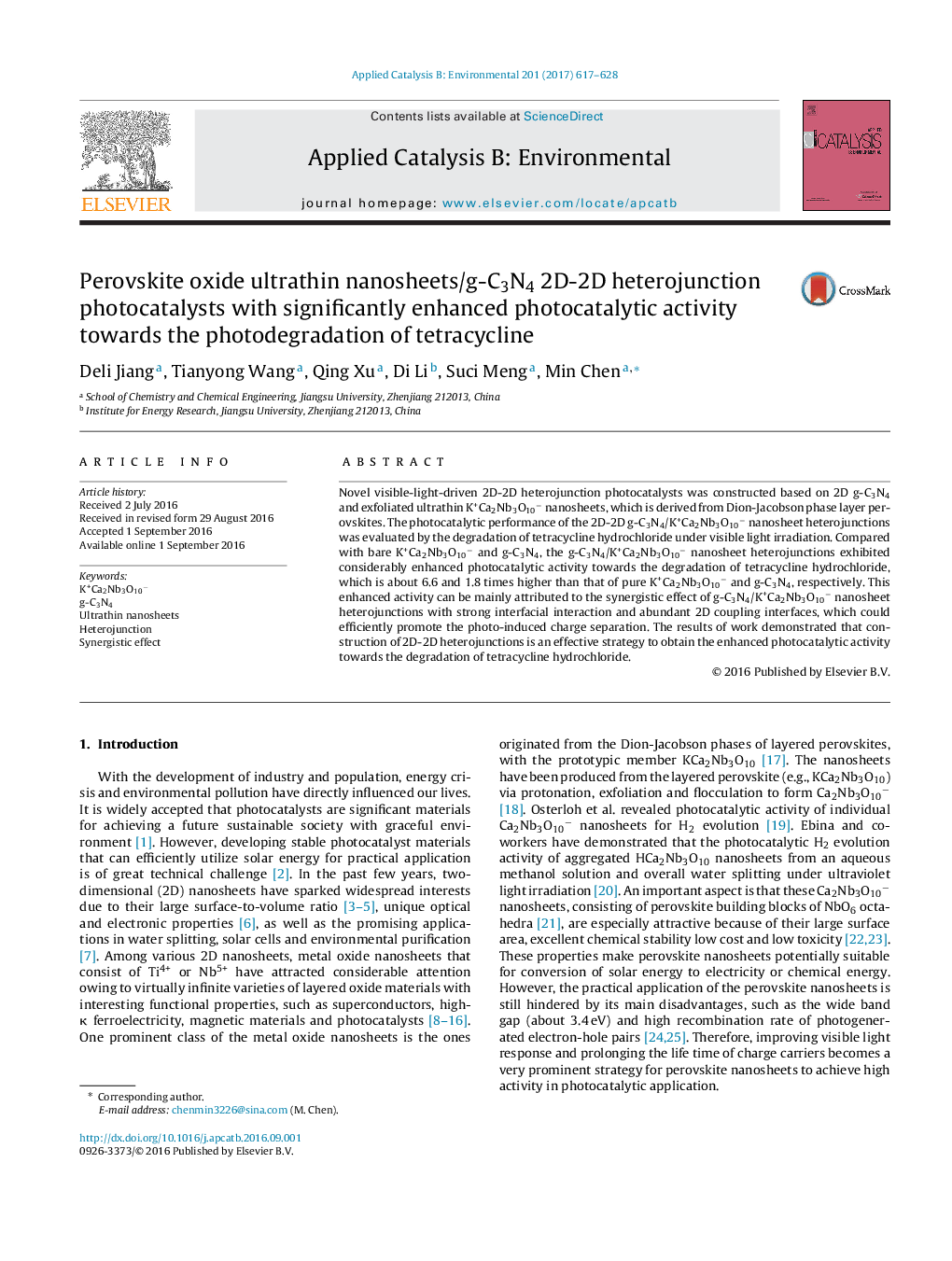| کد مقاله | کد نشریه | سال انتشار | مقاله انگلیسی | نسخه تمام متن |
|---|---|---|---|---|
| 6455082 | 1418819 | 2017 | 12 صفحه PDF | دانلود رایگان |

- 2D-2D g-C3N4/K+Ca2Nb3O10â nanosheet heterojunctions were fabricated.
- The g-C3N4/K+Ca2Nb3O10â heterojunctions have strong interfacial interaction.
- The nanosheet heterojunctions showed enhanced visible light photocatalytic activity.
- The enhanced activity was mainly due to the synergistic effect of heterojunctions.
- The superoxide radicals and holes are the two main photoactive species.
Novel visible-light-driven 2D-2D heterojunction photocatalysts was constructed based on 2D g-C3N4 and exfoliated ultrathin K+Ca2Nb3O10â nanosheets, which is derived from Dion-Jacobson phase layer perovskites. The photocatalytic performance of the 2D-2D g-C3N4/K+Ca2Nb3O10â nanosheet heterojunctions was evaluated by the degradation of tetracycline hydrochloride under visible light irradiation. Compared with bare K+Ca2Nb3O10â and g-C3N4, the g-C3N4/K+Ca2Nb3O10â nanosheet heterojunctions exhibited considerably enhanced photocatalytic activity towards the degradation of tetracycline hydrochloride, which is about 6.6 and 1.8 times higher than that of pure K+Ca2Nb3O10â and g-C3N4, respectively. This enhanced activity can be mainly attributed to the synergistic effect of g-C3N4/K+Ca2Nb3O10â nanosheet heterojunctions with strong interfacial interaction and abundant 2D coupling interfaces, which could efficiently promote the photo-induced charge separation. The results of work demonstrated that construction of 2D-2D heterojunctions is an effective strategy to obtain the enhanced photocatalytic activity towards the degradation of tetracycline hydrochloride.
311
Journal: Applied Catalysis B: Environmental - Volume 201, February 2017, Pages 617-628